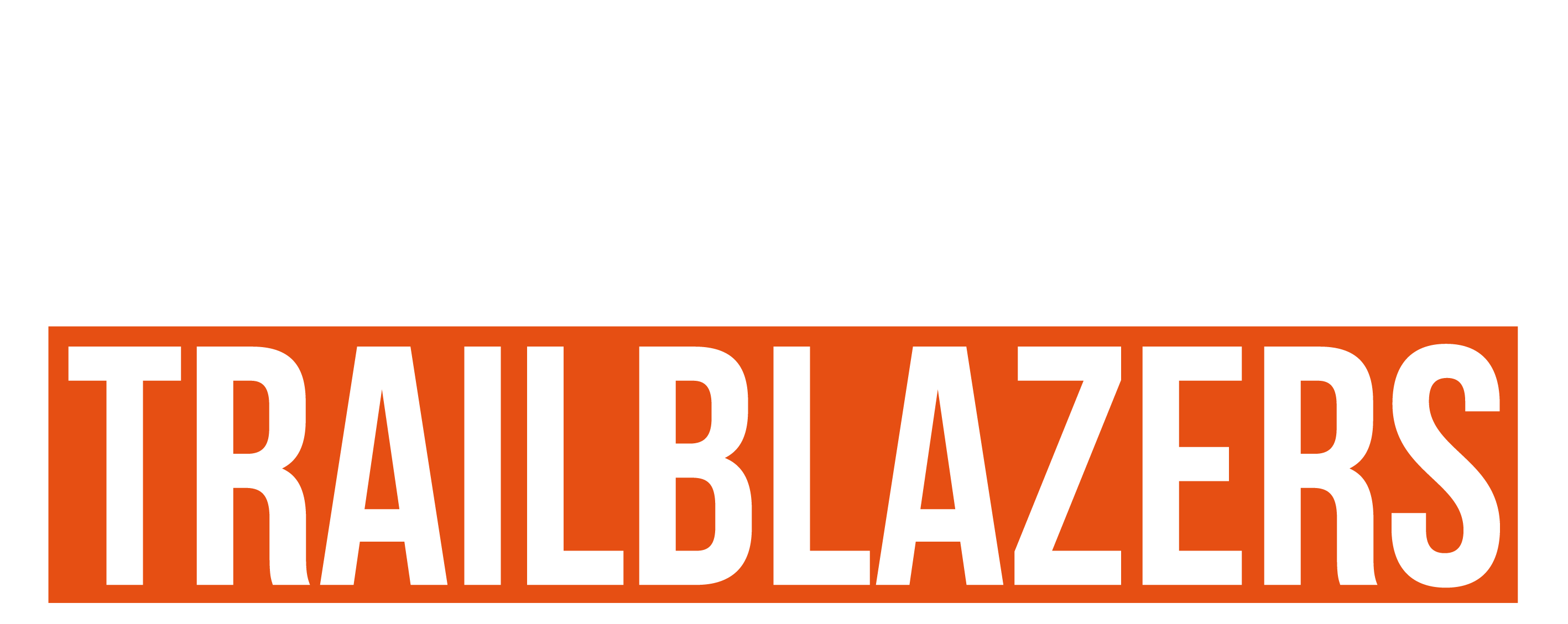
This podcast is a fascinating conversation between the host, Marcus Edwardes, and his guest, Marta Riggins. The dialogue sheds much-needed light on employer branding’s significant role in the recruitment process, employee engagement, and overall business success. Marta, a strategic consultant specializing in employer branding, breaks down the concept of employer branding and explains how it serves different business sizes.
Outline:
1. Marcus introduces himself and the podcast, “Recruiting Trailblazers,” and hints at the conversation’s main topic—employer branding.
2. Introduction of guest speaker, Marta Riggins, her career path, and expertise in employer branding discussion.
3. Discussion about Marta’s background and personal achievements outside of her professional roles.
4. Introduce the main topic—employer branding. Explanation of what employer branding is and its significance.
5. Discussion on the relevance of employer branding for different company sizes, from startups to established corporations.
6. Discussion about the negative impact of mishandled layoffs on a company’s employer branding and reputation.
7. Analysis of employee engagement being tied to employer branding and how engagement levels can reflect the effectiveness of the employer’s branding strategies.
8. Understanding the differences between employer branding and recruitment marketing.
9. Sharing the experience of how employer branding can play into company benefits, diversity, and inclusion efforts.
10. Closing thoughts on the importance of authenticity in employer branding strategies and the direct impacts of employer branding on employee retention and company growth.
Top Three Takeaways:
1. Authenticity is Essential: The podcast emphasizes that authenticity in employer branding is crucial. If companies market brand aspects that are not true to the experiences of their employees, the falsehood will potentially be exposed, which could severely affect the business’s reputation.
2. Employer Branding Affects Both Attraction and Retention: As Marta shares, not only is employer branding essential for attracting new talent but also in maintaining the engagement of current employees. Especially in difficult times, such as layoffs, a strong employer brand can significantly influence the company’s reputation.
3. Employee Engagement Metrics Provide Insight into Branding Strategy: Marta illustrates that regular assessments and implementation of data regarding employee engagement can help in crafting an effective employer branding strategy. This, in return, could better align the company’s actions with their employees’ expectations, furthering both business efficiency and employee satisfaction.
Unlocking Success: The Quintessential Quartet of Workplace Excellence
Building a Magnetic Employer Brand is crucial in the modern job market because it’s the beacon that attracts top talent. In an era where skilled professionals have their pick of employers, a company that stands out with a compelling Employee Value Proposition (EVP) can effortlessly pull in the best. But why stop at attraction? An Enriched Employee Experience ensures that once talent walks through the door, they find a culture that fosters innovation, offers support, and promotes well-being, making them want to stay, grow, and become ambassadors for the brand.
Clear Employee Communications and robust Employee Engagement are the bedrock of a thriving workplace. When employees are aligned with company goals and feel heard, they are more likely to be committed and contribute to the company’s success. Engagement strategies that recognize and reward can significantly amplify performance and collaboration, turning a workforce into a community.
However, during times of macro-economic upheaval, companies often tighten budgets and put these ‘soft’ aspects on the back burner. “Is focusing on employer branding really necessary right now?” some might ask, viewing it as a luxury rather than a necessity. But can organizations afford to ignore the very mechanisms that ensure resilience and adaptability during such periods? In tough economic times, shouldn’t a company be even more attentive to maintaining a strong employer brand and an engaged workforce to navigate through the storm? These questions loom large, and companies that find the right answers are likely to emerge stronger on the other side.
The Magnetic Employer Brand: Attract, Retain, Engage
Benefits:
– Attracts top talent effortlessly.
– Slashes hiring costs through a stellar reputation.
– Enhances employee retention rates.
– Boosts morale and engagement across the board.
Actionable Steps:
– Craft an Irresistible Employee Value Proposition (EVP): Define and communicate what sets your company apart. This is your war cry in the talent battlefield, highlighting your mission, values, and commitment to social impact.
– Embrace Authenticity: Share genuine stories from the trenches. Let your employees be the voice of your brand, showcasing real experiences that resonate with candidates and peers alike.
The Enriching Employee Experience: The Bedrock of Innovation
Benefits:
– Catalyzes productivity and creativity.
– Encourages employees to be proactive innovators.
– Converts employees into enthusiastic brand ambassadors.
– Enhances overall employee well-being.
Actionable Steps:
– Design Deliberate Touchpoints: Map out the employee journey, and create meaningful interactions at each stage.
– Empower Through Tools: Provide technology and resources that facilitate a seamless and fulfilling workday.
The Clarity of Employee Communications: The Harmony of the Workplace Symphony
Benefits:
– Guarantees alignment on objectives and company ethos.
– Nurtures a robust and inclusive culture.
– Invites and values feedback, paving the way for continuous improvement.
– Helps navigate through organizational change with ease and grace.
Actionable Steps:
– Establish Clear Channels: Implement a variety of communication platforms that cater to diverse needs, ensuring no voice goes unheard.
– Schedule Regular Check-Ins: Set aside time for transparent and honest conversations between employees and leadership.
The Vibrancy of Employee Engagement: The Pulse That Powers Performance
Benefits:
– Strengthens loyalty to the company’s vision and goals.
– Curtails the turnover rate, saving on rehiring and retraining.
– Amplifies individual and collective performance.
– Encourages a collaborative ecosystem.
Actionable Steps:
– Recognize and Reward: Implement a system to celebrate small wins and big achievements alike.
– Foster Growth Opportunities: Encourage professional development through learning initiatives and clear career pathways.
In conclusion, these four components—Employer Brand, Employee Experience, Employee Communications, and Employee Engagement—are not just isolated HR buzzwords; they are the cogs in the wheel of your company’s growth engine. Ignite these areas with strategic focus and watch as your organization transforms into a magnet for talent, a cradle for innovation, and a beacon of industry excellence.
Remember, as Marta Riggins emphasizes, “If you’re good at employer branding, you can make anything interesting.” It’s time to wield this power and craft an organization that’s not just a place to work but a place to grow, thrive, and make an impact.
A magnetic employer brand is not just a facade for the outside world; it’s a mirror that reflects the company’s internal values and practices. It’s the narrative that weaves through every job description, every interview, and every employee story shared on social media. A compelling employer brand answers the ‘why’ for a potential employee: Why should I join? Why should I care? Why should I stay?
The employee experience is the journey an individual takes with your organization. It’s the daily encounters, from the first interview to the last day, and every touchpoint in between. It’s the ergonomic chair, the user-friendly software, the smile from a coworker, and the feeling of satisfaction from a job well done. Enhancing this experience is not just about perks and parties; it’s about respect, empowerment, and creating a sense of belonging.
Employee communications should be a bidirectional street where information flows freely from the top down and the bottom up. It’s not just about memos and newsletters; it’s about the conversations that happen in hallways, virtual meetings, and on collaboration platforms. Effective communication fosters a culture where employees feel heard and understood, a culture where feedback is not just expected but actively sought.
Employee engagement is the heartbeat of the organization. It’s the enthusiasm employees bring to their roles, the willingness to go above and beyond, and the shared sense of purpose that drives collective achievement. Engagement is not a number on a survey; it’s the spark in the eyes of your team when they talk about what they do. It’s a key indicator of organizational health and a predictor of business outcomes.
By now, it’s clear that these four pillars interlock to form the foundation of a thriving workplace. When aligned, they create an environment where individuals not only come to work but come to contribute, innovate, and be part of something greater than themselves. These elements are not merely the responsibility of HR; they are the domain of every leader and the lifeblood of all team members. It’s through a commitment to these principles that a company can truly claim to be an employer of choice in the competitive landscape of talent.

Recent Comments